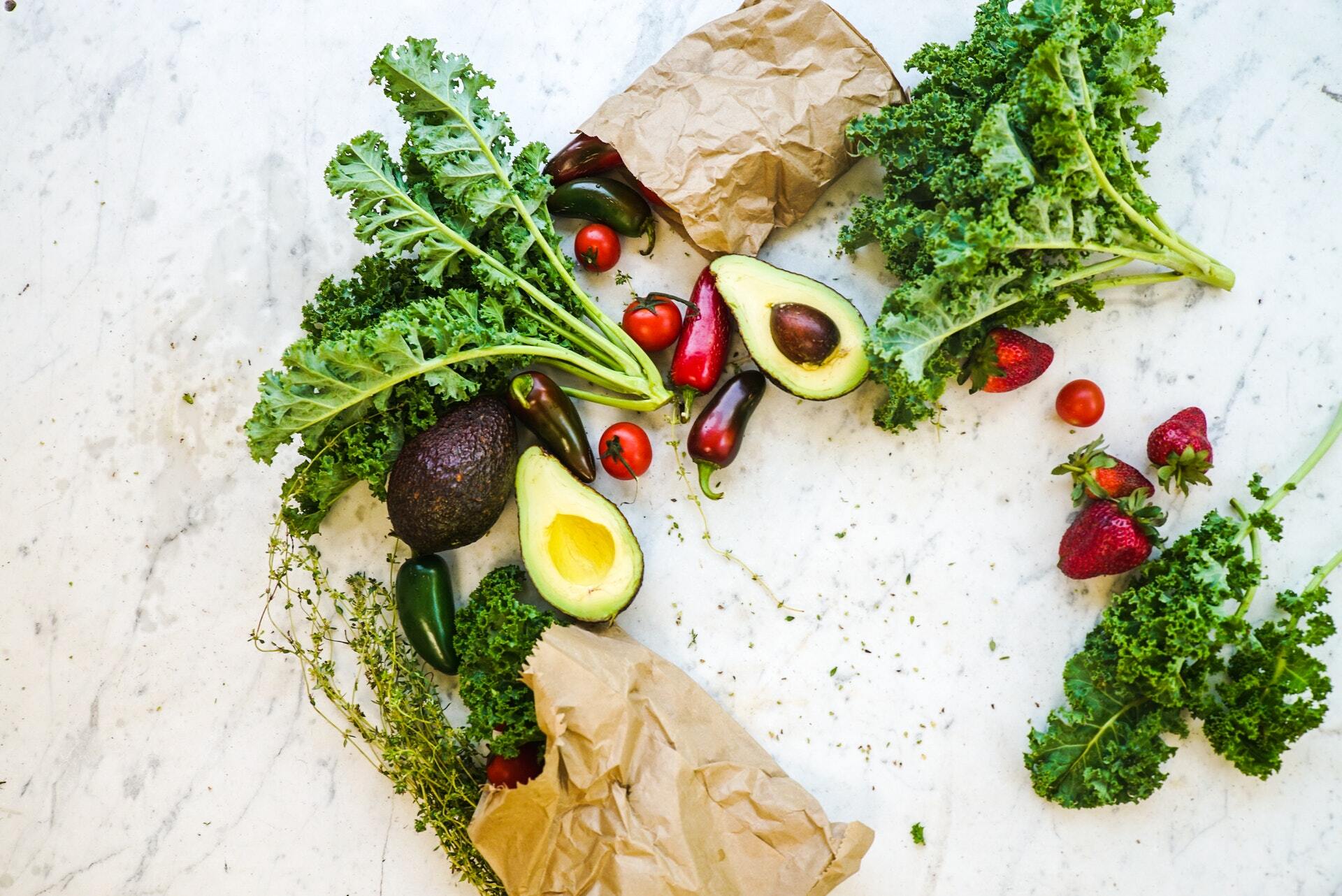4 Tips to Eat Healthy After a Lapse During COVID-19
Whether you’re interested in improving your nutrition to reduce pain, lose weight, or change bad habits you picked up during quarantine, here are some small steps to get back on track.
- Hinge Health Learning Center
- Articles
- 4 Tips to Eat Healthy After a Lapse During COVID-19
Reviewed by our clinical and medical experts
Emily Barker
Emily Barker is a nationally board-certified Health and Wellness Coach with additional certifications in Lifestyle Medicine and Digital Health. Read More
To help create healthy eating habits after weeks of quarantine, Janet, a Hinge Health participant, planted a vegetable garden for the first time. As Janet’s Health Coach, I’ve been working with her to reduce her chronic hip pain through Hinge Health’s sensor-guided therapy, remote 1-on-1 coaching, and personalized education. Janet recently shared, "I remember in our first coaching call how we discussed the importance of nutrition in reducing my persistent pain. I wanted to give planting a garden a try to also support me in being more active overall. I know that making changes in both my diet and exercise together will make me healthier as a result, but it has been challenging during these weeks at home."
The past few months of quarantine have brought changes to you and your members’ daily routines. Healthy eating habits may have gone by the wayside and led to some weight gain, and that is perfectly normal during uncertain times. In fact, you are not alone. In a recent WebMD survey of 1000 US respondents, nearly half of the women and almost one-quarter of men said they had gained weight due to COVID-19 restrictions.
When it comes to persistent pain, carrying a few extra pounds can make a big difference in how you feel. Research shows that weight loss can ease pain by reducing the amount of pressure on our joints. It’s been found that losing 10% of body weight can lead to significant improvements in osteoarthritis symptoms and pain relief.
4 ways to get back on track with healthy eating
Whether you’re interested in improving your nutrition to reduce pain, lose weight, or change bad habits you picked up during quarantine, here are some small steps to support you and your members in getting back on track again.
1. Start Small
Instead of making a drastic diet overall which can be unsustainable long term, incorporate small changes into your diet one at a time and build from there. Try this instead:
Replace a highly refined carb with a whole grain one, such as replacing white toast at breakfast with whole grain oats
Replace meat at one meal with a plant based option like tofu or beans
Swap foods with added sugars, like cookies or ice cream, with a serving of fruit
Add an additional serving of vegetables to a meal to increase fiber and fullness
Choose a fruit or vegetable you’ve never tried before at the grocery store
Swap a sugar sweetened beverage with water
2. Make it Easy
Follow Janet’s lead and make the healthy, easy choice. Janet can walk outside to her garden and pick fresh produce, so it is easy and fun to find something nutritious to eat. Here are other ways to make it easy:
Purchase pre-washed salad greens for a quick salad
Look for pre-chopped or frozen vegetables at your grocery store to cut down on prep time
Purchase pre-chopped fruits like pineapple or watermelon instead of cutting it up yourself
Purchase a cooked rotisserie chicken instead of cooking from scratch
Utilize canned beans or tuna as a protein which require no cooking time
Throw ingredients into a slow cooker and enjoy a delicious meal at the end of the day with no cooking involved
3. Make it Visible
Research shows that when fresh fruit is placed in a bowl on a kitchen counter, you are more likely to eat it. In a Cornell study, women who kept fresh fruit out in the open tended to be a normal weight compared with their peers. But when snacks like cereals and sodas were readily accessible, those people were heavier than their neighbors – by an average of more than 20 pounds.
Take stock of your kitchen and pantry. What types of foods are available and visible when you open your refrigerator and pantry? Try this:
Place fresh fruits and vegetables front and center in the fridge right where your eyeline naturally falls
Move snack foods and other temptations to the back corners of the pantry (or even the garage!) so you don’t see them when you open the pantry door
Stock whole grains, nuts, canned beans, and other healthy staples where you can see them
4. Find Accountability
As our Hinge Health participants have learned, accountability is critical when you are working towards building healthier habits. If you’re part of the Hinge Health program, take advantage of your Hinge Health Coach and Group to keep you on track with the healthy eating goals you wish to accomplish. Other ways to build accountability for yourself:
Weigh yourself or take measurements on a regular basis
Log your food in a mobile phone app such as MyFitnessPal or Fitbit
Tell a friend or family member about your goal and ask them to join you
Post your goal on social media for visibility and support
Find support through a healthy eating group either online or in person
Try to incorporate some of the ideas above into your post-quarantine routine, and know you’re doing your best! Even if you slip up, each day is a new opportunity to work towards healthier eating habits which will aid in reducing persistent pain. If you need support and are part of the Hinge Health program, know that your Hinge Health Coach is here to help you.
Make lifestyle and diet changes to reduce chronic MSK pain
Janet began the Hinge Health at-home digital MSK care program just prior to the COVID-19 pandemic. Through doing the prescribed exercise therapy playlists on the Hinge Health app combined with better lifestyle choices like healthy eating, Janet has seen a significant improvement in her chronic pain.
She recently shared with me, “I'm noticing the exercises help me refocus, feel better, and feel more energized. Without them, I likely never would have considered giving gardening a try. I have appreciated the support you have given to me over these past months and am looking forward to better eating habits this summer as I enjoy my garden’s bounty.” As her Health Coach, I’ve been with Janet since day one, and I am proud of Janet’s progress in changing her diet and lifestyle to improve her chronic joint pain and overall well-being.
Through sensor-guided exercise therapy and remote 1-on-1 coaching, Hinge Health offers a holistic approach to reducing chronic back and joint pain. To learn more how the three pillars of exercise therapy, education, and behavioral health drive long-term outcomes, request a demo below.

